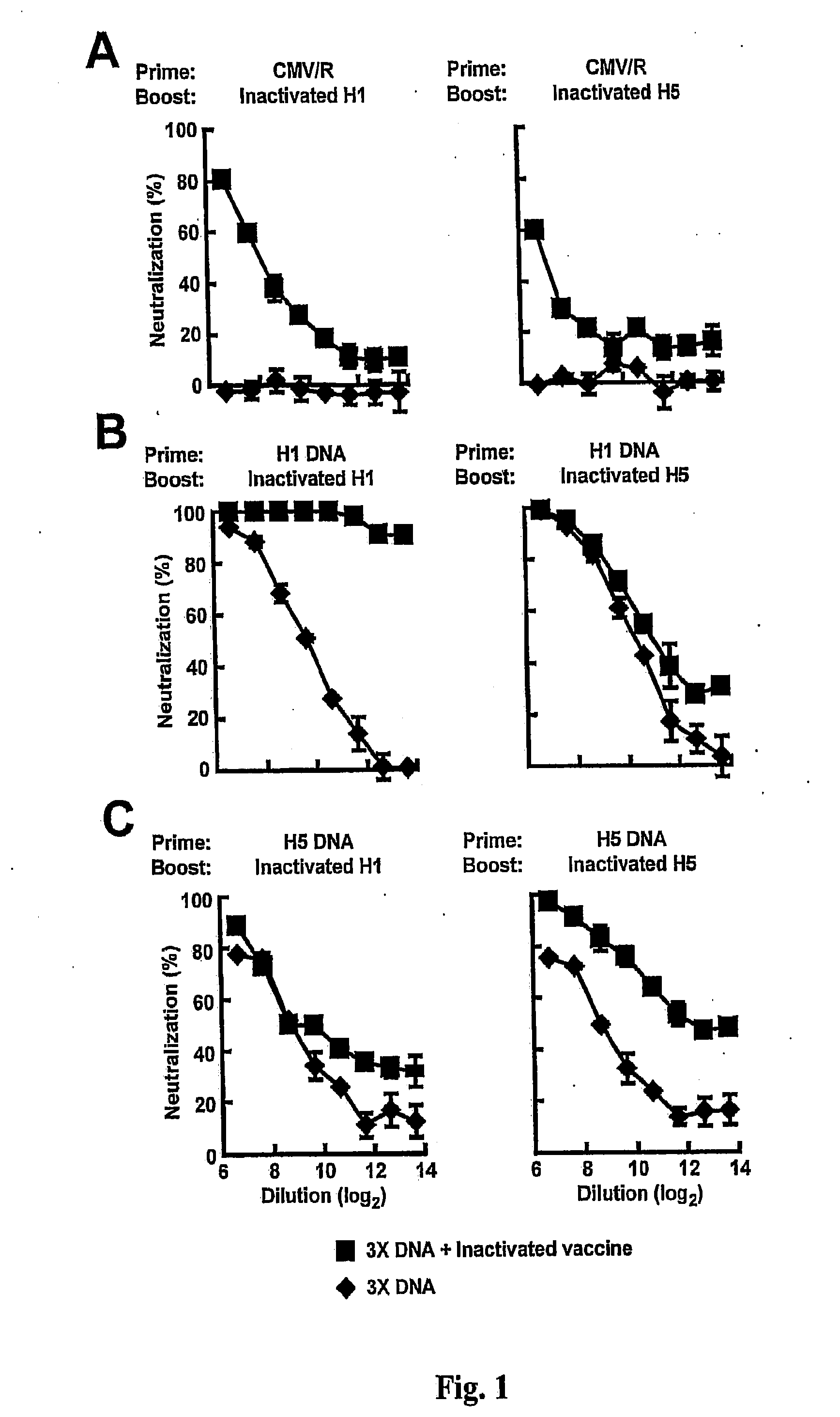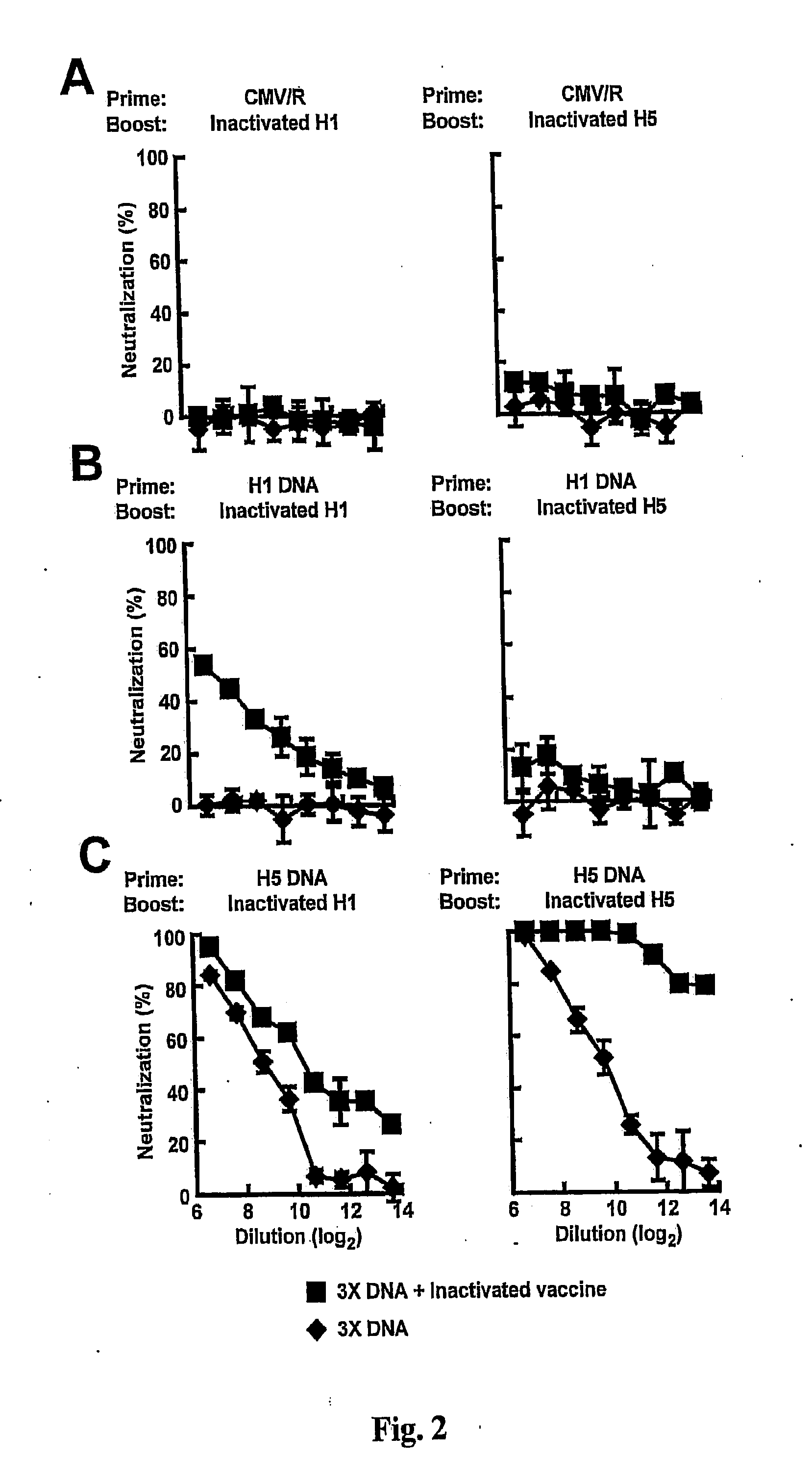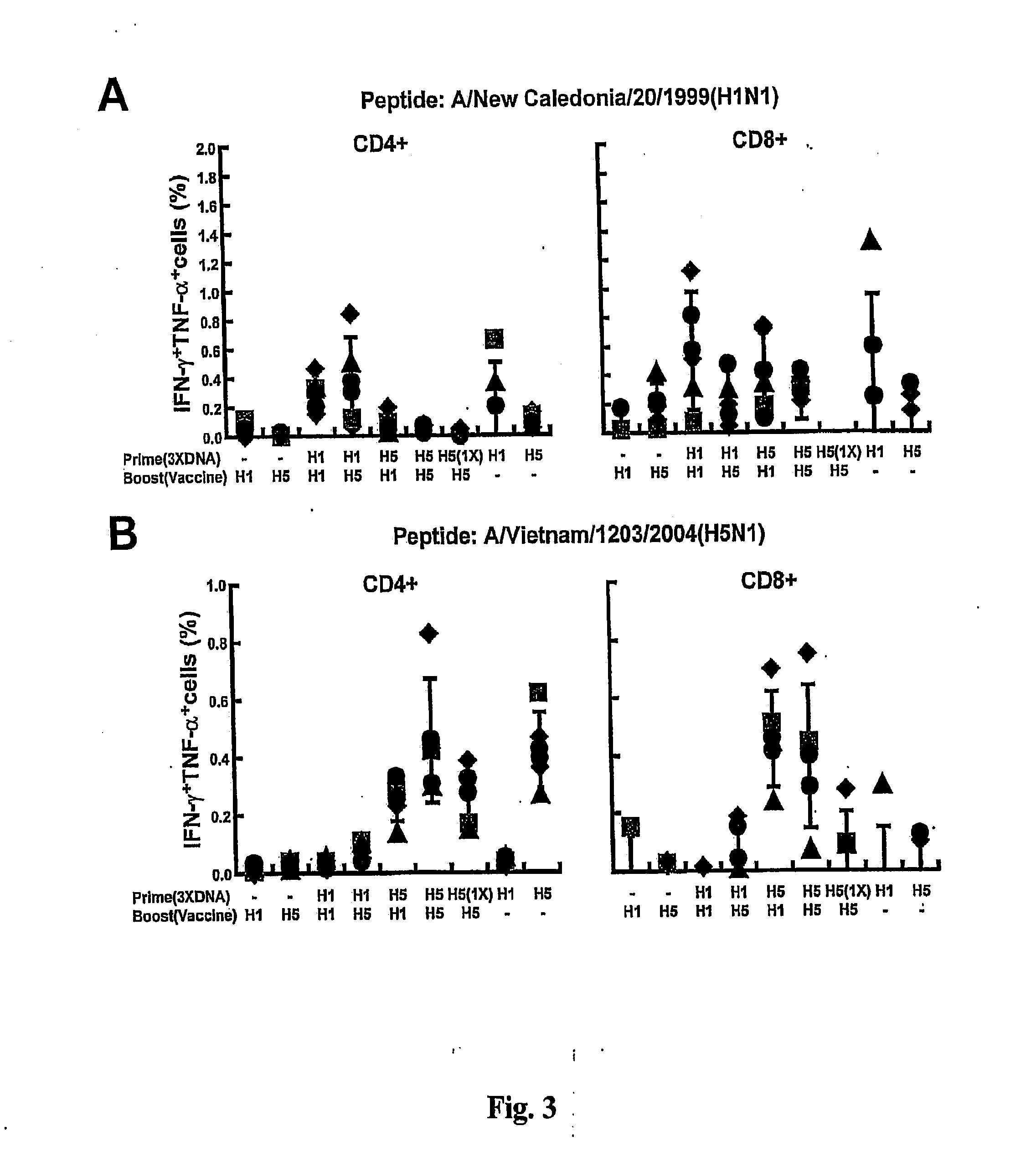DNA prime/activated vaccine boost immunization to influenza virus
a technology of dna prime and vaccine, applied in the field of molecular biology, can solve the problems of not being able to elicit such broad neutralizing antibodies by vaccination, affecting the immune system, and causing lethal human infections, etc., and achieve the effect of enhancing the immune response and boosting the immune respons
- Summary
- Abstract
- Description
- Claims
- Application Information
AI Technical Summary
Benefits of technology
Problems solved by technology
Method used
Image
Examples
example 1
Materials and Methods
[0155]Plasmid Construction. Plasmids encoding different versions of HA protein (A / New Caledonia / 20 / 1999, GenBank AY289929; A / Viet Nam / 1203 / 2004, GenBank AY651334) and NA protein (A / New Caledonia / 20 / 1999, GenBank EU103982; A / Viet Nam / 1203 / 2004, GenBank AY651447) were synthesized by using human preferred codons as described (Kong, W P et al, PNAS 103:15987) by GeneArt (Regensburg, Germany).
[0156]Production of pseudotyped lentiviral vectors and measurement of neutralizing antibodies. The recombinant lentiviral vectors expressing a luciferase reporter gene were produced as previously described (Yang, Z Y, Wei, C J et al, 2007 Science 317:825). PCT Patent Application Nos. PCT / US2007 / 004506 filed Feb. 16, 2007 and PCT / US2008 / 075853 filed Sep. 10, 2008 are incorporated herein by reference. For the production of the A / New Caledonia / 20 / 1999 (H1N1) pseudovirus, a human type II transmembrane serine protease TMPRSS2 gene was included in transfection for the proteolytic acti...
example 2
Neutralizing Antibody Response to DNA / Influenza Vaccine Immunizations
[0160]FIG. 1 and Table 2A show neutralizing antibody responses against A / New Caledonia / 20 / 1999 (H1N1) pseudovirus from mice immunized with HA plasmid DNA and inactivated vaccines. Mice (n=5) were immunized with 15 μg of plasmids three times at week 0, 3, and 6, and boosted with 5 μg inactivated vaccine at week 9. Sera were collected two weeks after the third DNA immunization and again two weeks after the vaccine boost. Neutralization by antisera from immunized mice was assessed by incubation of mouse sera with H1N1 A / New Caledonia / 20 / 1999 HA / NA pseudotyped lentiviral reporter vectors encoding luciferase. Percent neutralization was calculated by the reduction of luciferase activity relative to the values achieved in the presence of pre-immune sera. (A) Mice immunized with a control empty vector (CMV / R) and boosted with either H1 or H5 inactivated vaccine showed modest neutralization titers against H1N1 pseudovirus. ...
example 3
T Cell Response to DNA / Influenza Vaccine Immunization
[0162]FIG. 3 demonstrates T cell responses to H1 and H5 HA after DNA priming and inactivated vaccine boosting. Spleens from immunized animals were taken 12 days after the inactivated vaccine boosting. Spleen cells were re-stimulated with either H1 (A) or H5 (B) HA peptides. Intracellular cytokine staining for IFN-γ and TNF-α in CD4+ and CD8+ T cells was measured by flow cytometry following staining with a mixture of antibodies to the two cytokines Five animals per group were analyzed individually. The percentage of activated T cells that produced either IFN-γ and / or TNF-α in response to stimulation is shown. Symbols indicate the response of individual animals, and the median value is shown with a horizontal bar.
PUM
| Property | Measurement | Unit |
|---|---|---|
| body weight | aaaaa | aaaaa |
| body weight | aaaaa | aaaaa |
| concentrations | aaaaa | aaaaa |
Abstract
Description
Claims
Application Information
 Login to View More
Login to View More - R&D
- Intellectual Property
- Life Sciences
- Materials
- Tech Scout
- Unparalleled Data Quality
- Higher Quality Content
- 60% Fewer Hallucinations
Browse by: Latest US Patents, China's latest patents, Technical Efficacy Thesaurus, Application Domain, Technology Topic, Popular Technical Reports.
© 2025 PatSnap. All rights reserved.Legal|Privacy policy|Modern Slavery Act Transparency Statement|Sitemap|About US| Contact US: help@patsnap.com



